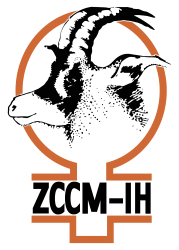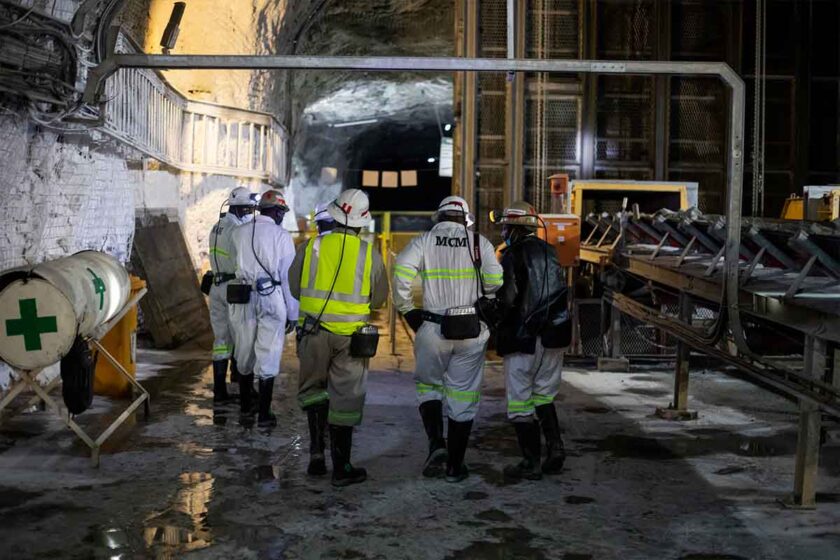CEC is deeply concerned by the claims made by Dr. Mbita Chitala, the immediate past Board Chairman of ZESCO Limited (ZESCO), in his recently released book, ‘Corporate Capture: The Political Economy of Electricity Management in Zambia (How Not to Manage a State Enterprise)’. The integrity of the book, which is purported to contain information inter alia suggestive of a CEC scheme in the alleged corporate capture of ZESCO, is questionable and the claims made against CEC meritless. It is extremely disappointing that Dr. Chitala chose to make such serious and unsubstantiated claims against a company bound by strict disclosure obligations as a listed entity, whose information can easily be verified. As one of the leading listed companies on the Lusaka Securities Exchange (LuSE), CEC adheres to strong corporate governance principles and conduct and has clear, transparent and honest communication and disclosures.
Whatever Dr. Chitala’s motives, it is clear that he makes several contradictions, misstatements, omissions of fact and repositioning of narratives to lead the reader to a particular conclusion. Dr. Chitala openly acknowledges various schemes, including the establishment of a new Special Purpose Vehicle, which were considered to take over CEC while he was Chairman of ZESCO. He provides two detailed options which he sketches out in the book. This could explain his motivation to undermine CEC so as to bring its value down and possibly take over the Company on the cheap.
We are continuing to study the book systematically and are still seeking legal guidance on some of the allegations and inaccurate statements. However, in the interest of transparency, we would like to highlight a few of the allegations and inaccurate statements:
- Throughout the book, Dr. Chitala tries to build the narrative that CEC’s shareholding is dominated by foreign interests. In Table 60, he presents a “CEC shareholding at becoming public” which is completely fabricated. Two shareholder groups in the table which he credits with a combined 45.1% shareholding in the Company were not even shareholders of the Company at the time. ZCCM- IH and ZECI, two entities representing Zambians, held over 72% of the shares which is not captured therein. In Table 61, he again continues with the misrepresentation showing shareholding in 2018 with ZCCM-IH at 13.25% instead of 20%. CEC is a listed company on the LuSE and, therefore, its shareholding is a matter of public record and easily verifiable by anyone. It is surprising that Dr. Chitala, whose biography at the beginning of the book refers to him as, “a registered Finance and Investment Adviser with the Zambian Securities and Exchange Commission” couldn’t verify this basic information which he relies on to make a key argument in his book.
- An allegation he makes consistently is that CEC disadvantages ZESCO by paying a suboptimal tariff. Dr. Chitala contradicts himself with regard to what the actual tariff CEC pays ZESCO. On page xvii, he states, “[ZESCO sold] to the mines through CEC at an average tariff of US$c 6.33/kWh. This was simply poor business.” Yet on page 114, he states, “Under the BSA, CEC obtained power from ZESCO at an average tariff of US$c 8.11/kWh.” If the Chairman of ZESCO for 5 years is not clear what their largest customer buys power at, why should we expect any different from those he reported to? No wonder Mr. Ronald Chitotela recently argued in Parliament that under the BSA, ZESCO sold power to CEC at US$c 3/kWh.
- CEC – Mopani Tariff Negotiations of 2017. Dr. Chitala on page 148 writes: “Until I left ZESCO, CEC had not concluded its tariff discussions with Mopani and failed to provide any progress to ZESCO or government.” This is, again, another blatant lie by Dr. Chitala. The truth is that CEC and Mopani completed these negotiations within 2017 and signed an addendum to their Power Supply Agreement (PSA) reflecting the agreed changes in tariff. It is again difficult to understand the motive behind blatant lies as presented on this subject by Dr. Chitala. Following the signing of the addendum between CEC and Mopani, CEC proceeded to inform both ZESCO and the Government and proposed a draft addendum to the BSA to ZESCO. However, under the leadership of Dr. Chitala, ZESCO was unwilling to review the addendum from CEC nor to sign it.
- Dr. Chitala makes a claim that the BSA through Clause (b) (i) and (ii) gave exclusivity of supply to CEC on the Copperbelt to the detriment of ZESCO and its business. In similar fashion as all the other points that Dr. Chitala raises as issues that ZESCO had with the BSA, what has been presented in the book is, unfortunately, nothing but misrepresentations and half-truths. However, for brevity, we will only cover the issue dealing with exclusivity of supply because of its alleged business implications on ZESCO. On page 97, he writes: “Clauses 10 (b) (i) and (ii) gave Exclusivity of Supply by CEC to the Copperbelt and was bad as it was discriminatory and violated all laws of commence. By this clause CEC was granted an ‘exclusive franchise’ for the supply of power on the Copperbelt. This entailed that only CEC could supply all mining and mining related activities. This exclusively was very restrictive and provided a monopoly to CEC with regard to supply of power to the mining customers on the Copperbelt, a position not commercially viable. Further, the said clause prohibited ZESCO from constructing, owning or operating transmission and distribution lines in these MineCo sites. The net effect of the foregoing was that ZESCO became restricted in owning or expanding its network on the Copperbelt. Section 8 of the Competition and Consumer Protection (CPC) Act, prohibited Parties from entering into Agreements that restrict competition.” However, Dr. Chitala completely omits an important aspect of the BSA contained in Clause 1 (a) (iii) which prohibited CEC from purchasing the power it supplied to its mining customers from any other source but ZESCO, unless in situations where ZESCO had no capacity to supply CEC’s power requirements. The BSA, therefore, exclusively reserved the Copperbelt mining market for ZESCO’s power and, thus, solidly protected ZESCO’s business interest in this respect. It was always clear that under the BSA, CEC could not and did not buy power from any other company but ZESCO.
- Dr. Chitala makes various claims of CEC owing ZESCO an amount ranging from US$225 – 325 million. On page xxix, he pegs CEC’s alleged owing to ZESCO at US$325 million and on page 120, when discussing his proposal for ZESCO to acquire CEC, he states, “ZESCO would have to pay a cash price of US$288 million. However, ZESCO also noted that CEC owed ZESCO about US$257.1 million and that this amount would be used to offset the price for the purchase of any ordinary shares from CEC.” However, Dr. Chitala goes on to contradict himself on page 124 by stating that the purported money that CEC owes ZESCO is the subject of Judicial Review proceedings in a case brought by the Chamber of Mines against the Energy Regulation Board (ERB) in 2014. Dr. Chitala states, “If the ERB decision is determined to be lawful by the Zambian High Court, ZESCO would be entitled to claim US$ 225 million from CEC.” Worth noting is that CEC would also be entitled to claim a similar amount from the mines in such a case. Further, Dr. Chitala omits to state that the decision of the ERB, while being the subject of the ongoing judicial review, has also been stayed by the High Court.
- Dr. Chitala misrepresents a number of the court cases involving the companies.
- Common Carrier Proceedings (Statutory Instrument 57 of 2020) – this is a matter in which CEC commenced judicial review proceedings against the then Minister of Energy’s decision to declare CEC’s transmission and distribution lines as common carrier on 29 May 2020.Dr. Chitala selectively does not take the reader through to the final outcome but rather chooses to end with the following, “The court of appeal refused to grant CEC an order of stay of execution of the Minister’s statutory directive. This meant that ZESCO would be enabled to use CEC’s assets to supply KCM and other mining companies on the Copperbelt who so wished at a tariff set by the ERB and the CEC action appeared to be academic actions with no legal import.”
The real final outcome is that High Court Judge Elita Phiri Mwikisa found that the applicant (CEC) succeeded on all grounds and accordingly quashed the decision of the Minister of Energy to declare its transmission and distribution lines as common carrier (SI 57). In a 71 page judgement, Judge Mwikisa stated, “whereas the Applicants concede that the minister does have power under section 15 (1) to declare a transmission line as a common carrier, they argue that he does not have power to declare the entire interconnected power system as common carrier and that he acted in excess of his powers. The Applicants contend that this action by the minister amounts to expropriation. I tend to agree with the submissions of the Applicants to the extent that the Minister’s decision was ultra vires as he acted in excess of his powers,”
- ZESCO and KCM Injunction – this is a matter in which ZESCO and KCM were granted an ex-parte injunction against CEC which stopped CEC from interfering with the supply of power by ZESCO to KCM following the expiry of the PSA between CEC and KCM. CEC counterclaimed, accusing ZESCO and KCM of colluding, which led to CEC not being paid US$144 million relating to unpaid invoices for power CEC had supplied to KCM under their PSA.Again, Dr. Chitala selectively does not take the reader through to the final outcome but rather chooses to end with the following, “ZESCO considered the CEC action as groundless, not least since ZESCO had not been privy to that PSA and was itself free as the Electricity Act 2019 provided to compete for business.”
The final outcome is that the matter came up for a status conference in August 2021 at which both ZESCO and KCM informed the court that they were discontinuing their actions following the quashing of SI 57 of 2020 by the High Court upon which they had grounded their respective claims. ZESCO finally filed its notice discontinuing the action.
We are deeply concerned with the way Dr. Chitala’s book is positioned and with its depiction of CEC. Our Board is discussing any additional action the Company could take, about which our stakeholders will be informed accordingly. CEC remains committed to transparency and full disclosure.
The Company reassures all its stakeholders that it is engaging constructively with the new Board and Management team at ZESCO, the Ministry of Energy and the ERB with the key objective of advancing the interest of the sector in a fair and equitable manner.
For more information, contact:
Chama Nsabika
Senior Manager Corporate Communication
+260 212 244914
+260 966 792922
nsabika@cec.com.zm
Source: https://cecinvestor.com/cec-strongly-refutes-claims-made-by-dr-mbita-chitala/





